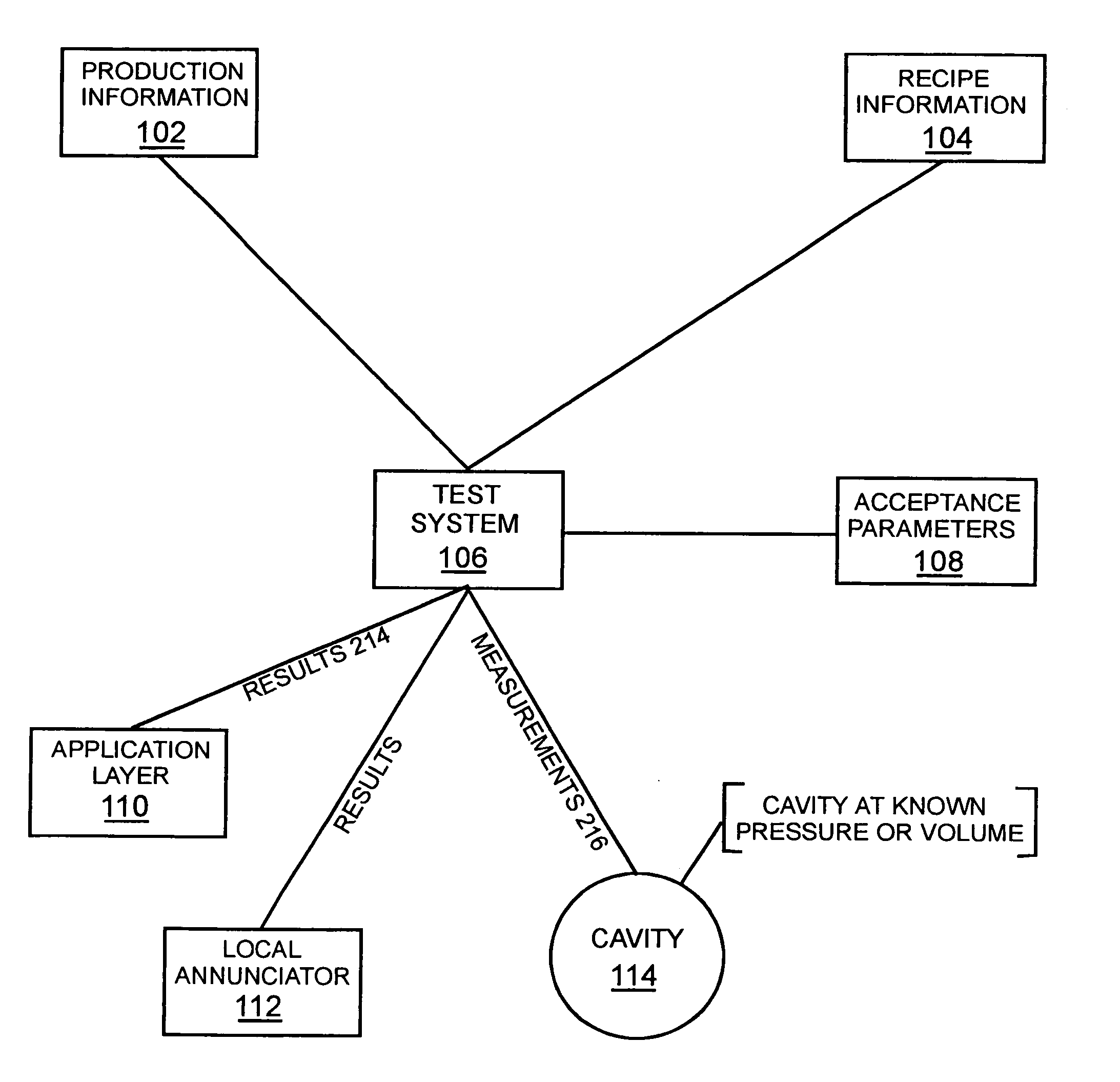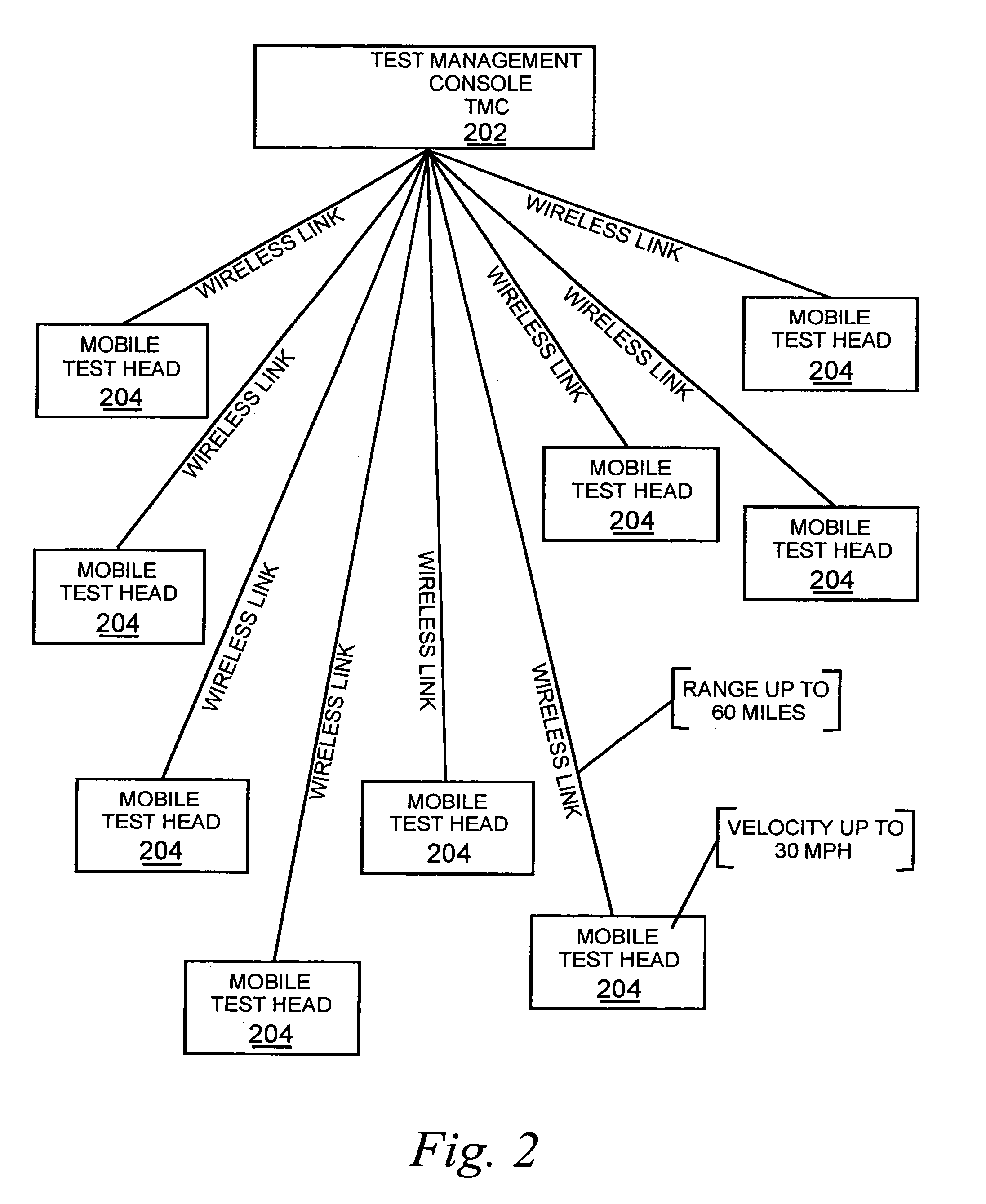Mobile HVAC cavity test device, method, and computer product
a cavity test and mobile technology, applied in the field of cavity pressure testing, can solve the problems of differential pressure decay system limited to large cavities and small cavities, system testing, and system damage, and achieve the effect of concentrating processing and effectively implementing a multi-tasking environmen
- Summary
- Abstract
- Description
- Claims
- Application Information
AI Technical Summary
Benefits of technology
Problems solved by technology
Method used
Image
Examples
Embodiment Construction
[0035]Referring now to the drawings, wherein like reference numerals designate identical or corresponding parts throughout the several views, FIG. 1 is a block diagram illustrating an example of the Test System 106 according to the present invention. The Test System 106 receives production information 102 and recipe information 104 from outside applications. Test System 106 conducts measurements 216 on cavity 114 which contains a volume of air at a known pressure or volume. The volume of air is compared against acceptance parameters 108 and the tested cavity is accepted or rejected. The result of the test is sent to outside applications 110 or to local enunciation devices 112.
[0036]FIG. 2 is a block diagram illustrating an example of Test Management Console 202 communicating via wireless links with to up to 9 mobile test heads 204, where each mobile test head 204 may conduct an independent test simultaneously with tests performed by other mobile test heads. Each of the test heads 20...
PUM
 Login to View More
Login to View More Abstract
Description
Claims
Application Information
 Login to View More
Login to View More - R&D
- Intellectual Property
- Life Sciences
- Materials
- Tech Scout
- Unparalleled Data Quality
- Higher Quality Content
- 60% Fewer Hallucinations
Browse by: Latest US Patents, China's latest patents, Technical Efficacy Thesaurus, Application Domain, Technology Topic, Popular Technical Reports.
© 2025 PatSnap. All rights reserved.Legal|Privacy policy|Modern Slavery Act Transparency Statement|Sitemap|About US| Contact US: help@patsnap.com



